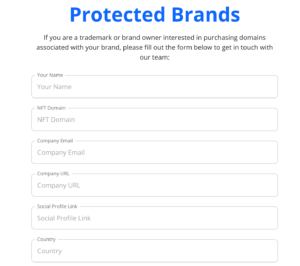
Sustainability is an important necessity, and looking for the right software that will support company goals and initiatives is crucial to streamline this time-consuming activity.
This is true if you manage different outputs from facilities and locations or need optional reporting. Many company annual reports require a summary of the vital sustainability initiatives as a critical part of the annual reporting process.
This post will walk you through some essential features to look for when choosing sustainability software. This ensures that your software support will allow your company to track and report its sustainability initiatives much more accurately.
Here are the seven important things that you need to look out for when choosing a sustainability software:
1. Product strength
Usually, the basics of vetting an enterprise software or service apply here. Important signifiers like the time in the market, historical performance, and market share give you a more well-rounded look and how well a solution helps you manage sustainability data and its initiatives.
Moreover, it would help that you weigh if the sustainability solution was built as an additional tool or a part of a bigger suite of productized solutions. This is a telling factor in whether you can scale your software alongside your organization’s needs.
2. Effective data management
Reliable software for sustainability allows a more seamless data collection and quick processing even for high amounts of data. So, whenever you’re choosing a tool, always think about usability.
Pick a solution to consolidate your data and give functional dashboards showing the necessary information. Moreover, the advantage of cloud-based software is that it’s easy to exchange information between external and internal stakeholders, providing more effective ESG data management.
3. Quality assurance and third-party review tools
Any decent software out there can make it easy to gather data. But suppose you want to enhance the sustainability initiatives of your company. In that case, you need to have tools for quality assurance and third-party verifiers to review information quickly, track reported values to source data, and know how the data is processed.
Moreover, the software will require the reporter to make updates and corrections when necessary because these data are reported to regulators and stakeholders, and accuracy is essential.
Ideally, you need to look for the following features that support auditing and transparency:
Calculations that are highly accessible and visible
All embedded calculations, rules, and queries should be visible and traceable to anyone reviewing them. This allows them to check the calculations and find out if there are any issues.
Accessible and auditable data sources and final values
Your final reported values and source data needs to be visible, and traceable. You should track it as well. See the “black box” calculations that could confound auditors and cost you a lot of labor when you’re determining how the reported value could be gotten, what the data inputs are, and where the source data originated.
Complete audit trails
You also need to ensure that your audit trails are present if any changes are in your key data. Ideally, you need to know who entered the value and changed it. You also must ensure that you keep track of the software and that everything is recorded and traceable.
Doing so will ensure the integrity of your process and reports. Excellent software usually has an audit tool that will track who did what, who’s responsible for which datasets, who changed whatever values, and how.
4. Intuitive and easy to use
For first-time users, a sustainability and ESG reporting software solution that’s simple and intuitive is vital. Doing so makes your system intuitive and easy to navigate, allowing more people to use and engage with your sustainability initiatives. There shouldn’t be any restrictions on user profiles so that you can give every person access to precisely what they need.
Another thing to consider is whether our sustainability reporting software solution could be integrated with other systems. The data managed in your ESG software could be fed automatically to other systems and vice versa. In that case, it enhances the ease of use and streamlines the data management across your organization.
5. Ongoing support
As soon as you’ve chosen and implemented your ESG reporting software solution, it’s also vital that you have access to ongoing support so that you can make the most out of it. More often than not, organizations use the software only to find out they need more customer support.
It shouldn’t be just about the software, either. It would help if you also considered whether you’re confident about getting the subject matter support and the best advice to help you with your sustainability reporting strategy.
6. Future-proofing
A clear idea of your business strategy for the next couple of years is key to making your system last. Add that to your data map and the data requirements you have.
Also, while you’re at it, make sure that you specify all users, roles, and sites that you need now and in the long run. If you’ve managed this, you’ll have a clear idea of the essential requirements you need.
7. Data security
When choosing a sustainable management solution, you must consider data compliance. Sustainability software will be incorporated into your organization’s management system, giving access to all the vital information about your business.
So, you must ensure that your software complies with all the critical data regulations. This is to ensure the success of your sustainability initiative and the safety of all sensitive data.
It would help if you also had a solution to protect your data against cybercrime. Ideally, have a backup system if any issues lead to data loss. Also, ensure that you have sustainability software that lets you access controls and audit trails, so it’s easier to track who’s accessing your data.
Over to You
Sustainability software is crucial if you want to be responsible and understand its environmental impact. This software provides detailed tracking of set goals, measures progress on these targets and automates your sustainability reporting process. Good luck!
- SEO Powered Content & PR Distribution. Get Amplified Today.
- Platoblockchain. Web3 Metaverse Intelligence. Knowledge Amplified. Access Here.
- Source: https://usgreentechnology.com/7-important-things-to-look-for-when-choosing-a-sustainability-software/
- 7
- a
- About
- access
- accessible
- accessing
- accuracy
- accurately
- across
- activity
- Additional
- ADvantage
- advice
- against
- All
- Allowing
- allows
- alongside
- always
- amounts
- and
- annual
- anyone
- Apply
- assurance
- audit
- auditing
- auditors
- automates
- automatically
- Backup
- Basics
- because
- BEST
- between
- bigger
- built
- business
- case
- Changes
- check
- choosing
- chosen
- clear
- collection
- company
- confident
- Consider
- considered
- consolidate
- controls
- Corrections
- Cost
- could
- Couple
- critical
- crucial
- customer
- Customer Support
- cybercrime
- data
- data loss
- data management
- datasets
- detailed
- determining
- DID
- different
- doing
- ease of use
- easier
- Effective
- either
- embedded
- engage
- Enhances
- ensure
- ensures
- entered
- Enterprise
- enterprise software
- environmental
- ESG
- essential
- Even
- Every
- everything
- excellent
- exchange
- external
- facilities
- Features
- Fed
- final
- Find
- following
- from
- functional
- getting
- Give
- Giving
- Goals
- good
- help
- helps
- here
- High
- highly
- historical
- How
- HTTPS
- idea
- Impact
- implemented
- important
- in
- Incorporated
- information
- Initiative
- initiatives
- integrated
- integrity
- internal
- intuitive
- issues
- IT
- Keep
- Key
- Know
- labor
- Last
- lead
- Lets
- locations
- Long
- Look
- looking
- loss
- Lot
- make
- MAKES
- Making
- manage
- managed
- management
- Management Solution
- management system
- many
- map
- Market
- Matter
- measures
- more
- most
- Navigate
- necessary
- Need
- needs
- next
- ongoing
- organization
- organizations
- originated
- Other
- part
- People
- performance
- person
- plato
- Plato Data Intelligence
- PlatoData
- Post
- precisely
- present
- process
- processing
- Product
- Profiles
- Progress
- provides
- providing
- quality
- Quick
- quickly
- recorded
- regulations
- Regulators
- report
- Reported
- reporter
- Reporting
- Reports
- require
- Requirements
- responsible
- restrictions
- review
- reviewing
- roles
- rules
- Run
- Safety
- Scale
- seamless
- sensitive
- service
- set
- seven
- Share
- should
- Simple
- Sites
- So
- Software
- software solution
- solution
- Solutions
- some
- Soon
- Source
- Sources
- stakeholders
- Strategy
- streamline
- subject
- success
- suite
- SUMMARY
- support
- Sustainability
- sustainable
- system
- Systems
- targets
- The
- The Basics
- The Source
- thing
- things
- Think
- third-party
- Through
- time
- time-consuming
- to
- tool
- tools
- track
- Tracking
- Transparency
- true
- understand
- Updates
- usability
- use
- User
- users
- usually
- value
- Values
- visible
- vital
- weigh
- What
- whether
- which
- while
- WHO
- will
- would
- years
- Your
- zephyrnet








